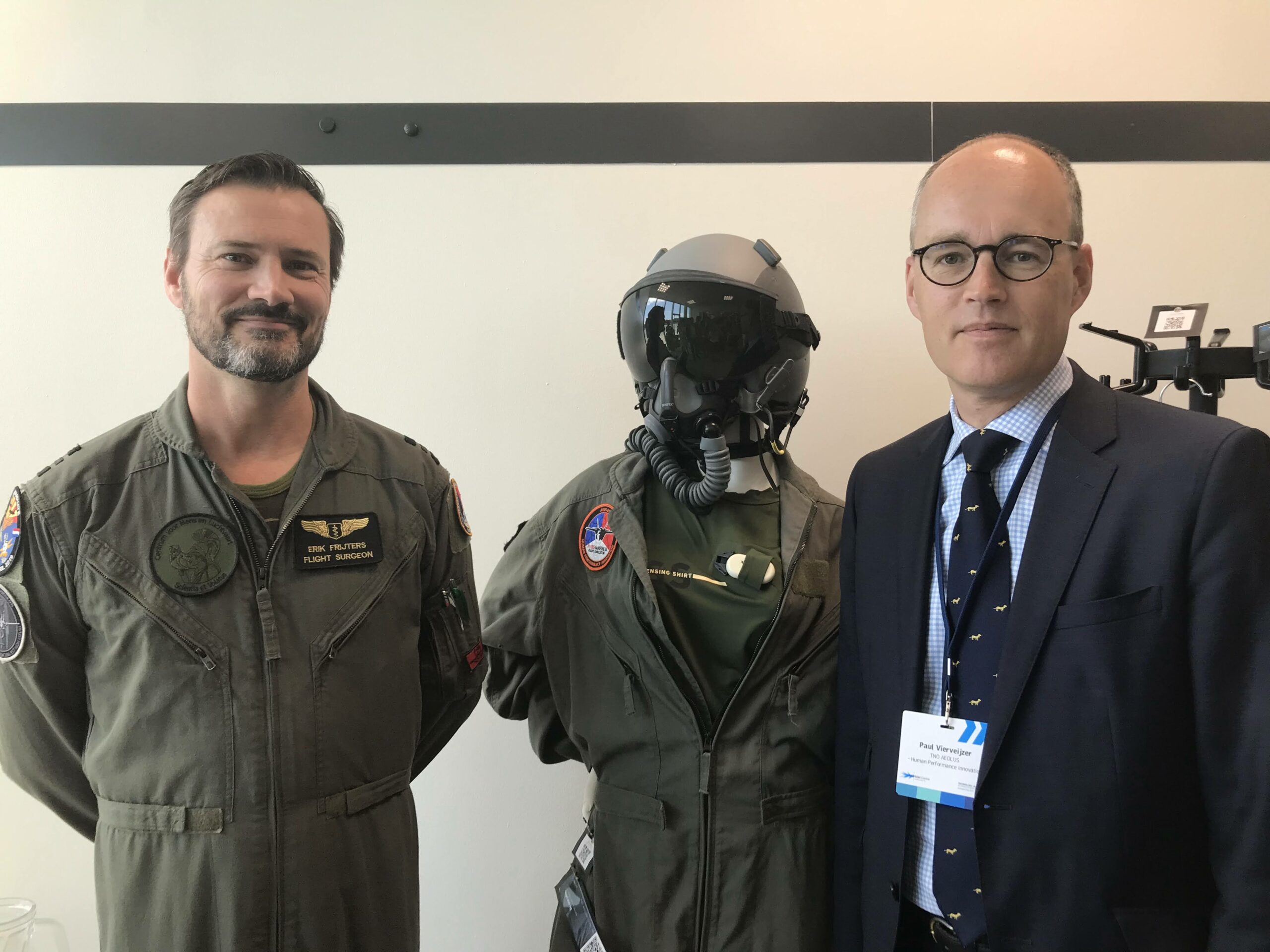
Pilots in the air force often face extreme circumstances when flying. Machines such as F-35 have many sensors that can alert the pilot if something is not right. But pilots’ vitals are rarely measured. After Erik Frijters, Senior Flight Surgeon at Royal Netherlands Air Force (RNLAF), was asked a few times why this was the case, he decided to take things into his hands. In collaboration with AEOLUS and Holst Centre, he has been working on a flight-sensing shirt. It monitors pilots’ vitals and as a result improves missions’ success.
From a health patch to a flight-sensing shirt
“I took a medical patch to find out if it could be something that might be developed for use during flights and the results came out quite promising,” said Frijters during Holst Centre’s Innovation Day. The health patch allows the monitoring of whoever wears it from distance. It can measure heart rate, ECG pattern irregularities, vibrations, dehydration, and G-load.
The medical patch is usually used for people who have a medical condition. “The people we use the patch for, do not have a medical condition. They are people who have excellent health but they are brought to quite extreme environments such as G-forces and deployments in desert conditions,” said Frijters while giving his speech.


“There were some sensing shirts on the market, which were not developed for the aerospace domain. They were not sufficient for the extreme environments that pilots are finding themselves in,” said Paul Vierveijzer, Senior Manager of Business Development at TNO and TNO Lead at AEOLUS Human Performance Innovation Center. “We started developing the shirt specifically for the aerospace domain. We started with a health patch from the medical domain and created a new system.”
“We did all kinds of testing. We did flight testing to see if it was robust and could do the work we were claiming it could do. And sometimes we found out that some things didn’t work. We went back to the previous shirts and started trying to find out how to make it better,” explained Frijters.
Why is it needed?
Wearing a flight sensing shirt has the potential to increase mission success by increasing mission safety. “Imagine a pilot pulling a lot of Gs and their brain starts to desaturate. This means that any moment they can lose consciousness,” elaborates Frijters. According to him, if pilots receive an alert about this, they would be able to step back and prevent “passing out and crashing into the ground”. But there is more. Frijters explained that if measurements are done, they need to be robust, reliable, and non-obtrusive. “The only time the pilots need to know about something such as saturation is when it is off,” noted Frijters.

Space for improvement
While the flight-sensing shirt seems promising, there are things that need improvement. One of the challenges that are still faced by the developing team is putting on and taking off the shirt. Frijters explained that it requires efforts to get the patches right because they have dry electrodes.
The second thing requiring attention is the output of the data. “How do you present it? What does the pilot need? What kind of signal to use?,” brought up Frijters. The ideal condition would be to have a user-friendly product, that is switched on and ready to go.
Third, data is problematic not only in presenting it but also in storing it. Rather than a technical, this is an ethical dilemma. “I think the people need to be in charge of what happens with their measurements,” underlined Frijters. “You are observing healthy people and you might discover things that you haven’t discovered before. And if the data is anonymized and analyzed on a big scale, we might find stuff that might improve the medical screening.”
Suit for every pilot
The shirt is just the beginning. It is the start of the development of the suit. Printable electronics allow the opportunity to print on different fabrics and increase comfortability. “The shirt is first because it is easy to put on and ideally you would have something that the pilot is wearing anyway,” explained Frijters. “And the suit is more sensitive than a shirt. It is not limiting the measuring to just the chest.” If the technology turns out to be robust it could also be offered to helicopter pilots and civilian pilots.


